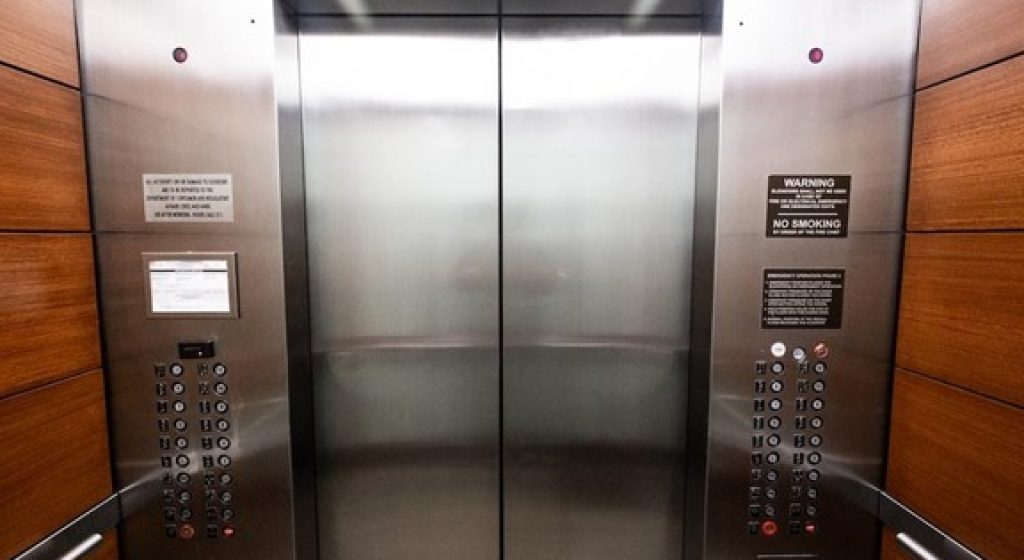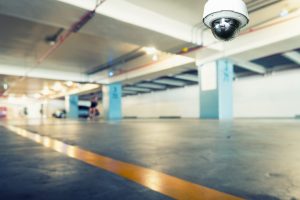Elevator safety is a critical part of property ownership and management, but maintaining the best elevator practices is more than ensuring elevators go up and down. Alarm Detection Systems (ADS) can help you set up the most dependable video and audio monitoring system with 24/7 operators ready to take action the moment emergencies arise. Read on to learn why elevator video monitoring is so important, the legal requirements, and how ADS can help.
Why Elevator Video Monitoring is Important
Ensuring your elevator’s video and audio monitoring systems are dependably operational is important for you and everyone who uses them. Basic systems like call buttons, two-way communications, and cameras ensure your building stays up to code, maintains a chain of contact, and provides peace of mind.
Compliant With ADA and ASME Requirements
Maintaining a dependable elevator video and audio monitoring system will help you pass inspections. Two-way communication systems within elevators are required by the Americans with Disabilities Act (ADA), along with other specifications discussed below. Failing to have a working communications system could result in fines and inspection fees. In some cases, these fines accrue daily until the problem goes away.
Chain of Contact
When an elevator emergency occurs, you’ll need to contact the appropriate person or team to resolve the problem, be it a technician, property manager, fire department, or medical crew. There is no time to waste during emergencies, so it’s critical that all contact information is readily available. Reliable monitoring systems like ADS store all important contact information so operators can reach the right people as soon as emergencies are identified.
Peace of Mind for Passengers
“Tower of Terror,” a thrilling elevator-centric episode of The Twilight Zone, has inspired movies, amusement park rides, and nightmares, and for a good reason: Being trapped in an elevator is a universal fear. Setting up an advanced elevator audio monitoring system will help ensure occupants’ safety. Posting emergency instructions also reassures elevator occupants. Having someone on the other line of your two-way communication system helps keep occupants calm should an emergency occur.
Always Keep Eyes on the Elevator
For many buildings, front desk employees and security are the first lines of response to elevator emergencies — but what about the hours when the front desk is empty? Having an elevator video monitoring system ensures there are always eyes on your elevator, even after business hours. ADS operators are trained and experienced in emergencies to resolve problems correctly without mistakes or wasted time. This way, you always have someone on hand who knows how to fix issues the moment they arise.
Reputation
Unreliable elevators can build an undesirable reputation for your building. A malfunctioning or unsafe-looking cab causes concern for occupants, and elevators that get stuck often make headline news. How safe your elevator looks and how prepared you are for emergencies impacts the perception of your building, especially during unavoidable circumstances. Reputation is particularly important for offices, apartments, condos, and other facilities with high foot traffic.
Requirements for Emergency Elevator Monitoring
Elevator two-way communication is essential for elevator monitoring, allowing occupants to talk with a response team in emergency situations. As elevator audio monitoring technology has advanced, so have the requirements for these emergency systems.
Elevator Emergency Signaling Devices
Requirements under the American Society of Mechanical Engineers (ASME), elevator or “car” emergency signaling devices now include:
- two-way message display in the elevator cab for hearing- and speech-impaired occupants
- a means for authorized emergency personnel to view video footage of passengers anywhere in the elevator cab
- a means activated by authorized emergency personnel to change the elevator cab message to indicate help is on-site in cases where emergency personnel must travel 60 feet or more
These ASME requirements are more specific than previous specifications. Their goal is to improve communication between emergency responders and all elevator occupants, particularly those with hearing impairments, speech impairments, and other disabilities, by having both visual and audio communication options readily available. Prewritten messages post via the cab’s video display. From here, occupants can select “yes” or “no” using the “door open” and “door closed” buttons.
These updated requirements also improve “false alarm” responses. Very regularly, elevator occupants accidentally press the emergency button, often without noticing it. In the past, if monitoring station operators couldn’t communicate with anyone inside an elevator after an apparent false alarm, a response team had to be dispatched to the location. Today, cameras and clear forms of video and audio communication allow operators to see everything inside the elevator every time someone presses the emergency button.
Video Communication
Encrypted one-way video communication allows operators and emergency responders to clearly see inside the cabin to identify occupants, assess problems, and quickly determine solutions. This is especially important when occupants cannot communicate due to a disability, incapacitation, or stress. In addition, ADS offers radio data connections that meet all of ASME’s complex requirements.
Next Steps
When upgrading your elevator’s audio and video monitoring systems, you need a security firm that is experienced, dependable, and versatile for different buildings’ needs. At Alarm Detection Systems, we have over 300 trained professionals prepared to consult with you and handle emergencies, no matter the time or day. ADS also offers easy-to-learn smartphone access to all of our security devices, letting you monitor your elevator or building even while you’re away.
Our central monitoring station received The Monitoring Association’s five-diamond certification, the highest certification level in the industry, as a testament to our commitment. We pride ourselves on being an all-in-one vendor for your building’s security needs, from the back doors to the elevators.
We understand that when security problems arise, they must be resolved fast, so we consistently deliver same-day and next-day services. In our fast-paced process, we assess property risks, determine vulnerabilities, and craft a layered security program that is comprehensively designed for your building. Connect with an expert from our team today.
About Alarm Detection Systems, Inc.
Alarm Detection Systems is one of the largest alarm firms in the country. Family-owned since 1968, we provide business alarms, fire alarms, card access, security cameras, and home security systems. Proudly servicing Chicagoland, Northern Illinois, Northwest Indiana, and Southern Wisconsin in the Midwest. Call us at 630.844.6300 for more information.
In Colorado, we service all of Denver, Boulder County, Northern Colorado, the Eastern Plains, and Colorado Springs. Call us at 1.800.446.7519 for more information.



